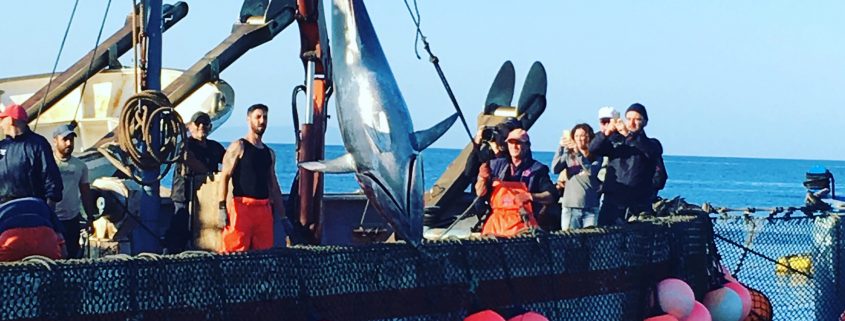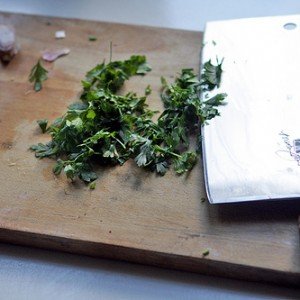The Almadraba : Netting Blue-Fin Tuna, The Phoenician Way
THE ALMADRABA: NETTING BLUE-FIN TUNA, THE PHOENICIAN WAY
Last week – I saw it happen. I watched as the majestic blue-fin tuna, glistening in the morning sunlight, were being hoisted out of the sea to begin their journey from Zahara de los Atunes to dining tables in Japan. In a small boat of just 10 people, I was with Ignacio Soto of Nature Tarifa – Ignacio has been granted the first-ever license to take visitors out to watch the levantá (raising of the trap) of the blue-fin tuna, as practised by fishermen using the ancient almadraba system.
Known as atun rojo (red tuna, thunnus thynnus) here in Spain, it is highly prized – if you’ve ever tasted its sweet, tender flesh you’ll know why. The Japanese can’t get enough of it to make sushi/sashimi, which is why about 80% of tuna caught off these shores is exported. Before heading into the warmer Mediterranean to spawn in May, the blue-fin tuna spend the winter in the depths of the Atlantic and build up blubber to keep warm. This extra layer of fat is why the tuna melts in your mouth like butter.


Thinking back, before I bought my white house perched high up in the pueblo blanco of Vejer de la Frontera, I’d never heard of the almadraba. And when I did eventually become aware of the excitement stirred up every May by the arrival of deep, dark-red slabs of tuna, proudly displayed on the marble at Manoli’s Pescaderia, the whole almadraba event became a bit of a fascination for me.
Until I was in my late 20s, I’d never even seen or tasted fresh tuna. In Aberdeenshire, where I grew up, tuna was the domain of John West. It was surely a prized product, because each green tin contained juicy flakes of tuna that Mr West hadn’t rejected!! I’m pretty sure I thought it came from Canada – or did I even think about how this fish had ended up in my sandwich? At university I used to mix it with boiled white rice, tinned sweetcorn, soy sauce and toasted flaked almonds (obviously a gourmand in the making!) I remember my first taste of fresh tuna, at a restaurant in NYC in the late 80s. The pinkish-grey slice had been encased in crushed peppercorns and seared. I was blown away by its amazing flavour.

There doesn’t appear to be a shortage of atun rojo in the markets here – it’s the price which is so prohibitive: €24 per kilo for the basic cuts, rising up to €38 per kilo for the prized barriga (belly). Interestingly, I recently returned from Sicily, where the atun rojo was sold in the markets for €16 per kilo. Perhaps not as sought-after once it has swam all the way to Sicily, thereby reducing its prized body fat.
So now, the people of Barbate are left to enjoy cans of tuna from Lidl, whilst they can only watch out of their windows as the tuna are lifted from the waters that were once free to be fished by their forefathers.
A similar thing has happened to quinoa, a protein-rich grain from South America. Once the mainstay of Andean people, since before the time of the Incas, it is now the darling of the culinary adventurer, and has become unaffordable to the people who farm and live there. These days they are reduced to pizzas, whilst their indigenous crop heads to the gourmet shelf of your local supermarket.
Once the catch was heading off to the processing plant at Barbate the remaining men and boats reset the almadraba trap for the next day – and it was all over. As if nothing had happened. Following 20 minutes of ferocious splashing by the huge fish, the sea returned to its rolling calm, Ignacio turned our boat around, and we too sped back into harbour. I felt an overwhelming feeling of loss – wondering if the magic of the atun rojo and the almadraba had left me.










